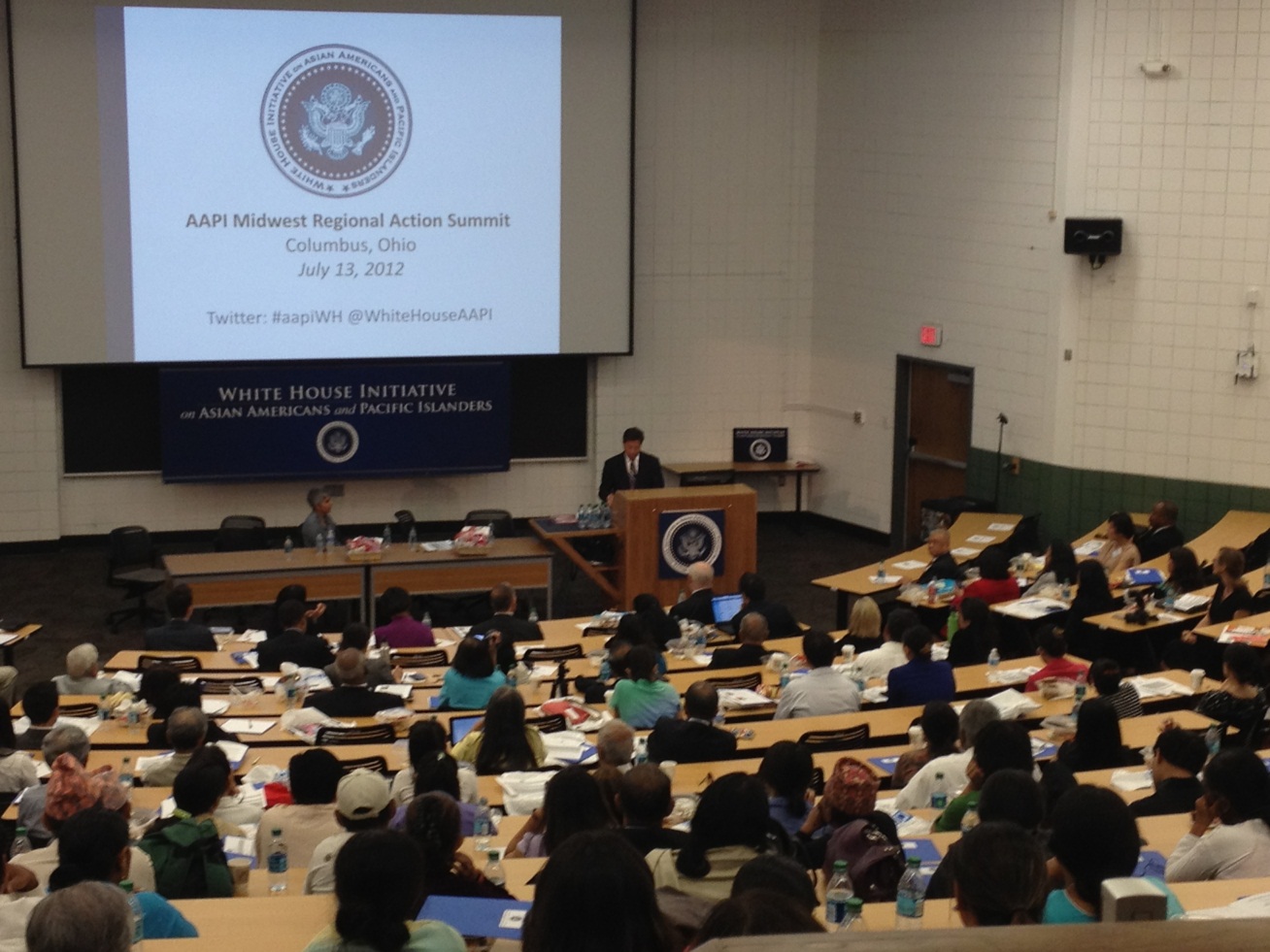
On July 13, the White House Initiative on Asian Americans and Pacific Islanders convened an Asian American and Pacific Islander (AAPI) Midwest Regional Action Summit in Columbus, Ohio. The Summit brought together community leaders and federal agency representatives in a day-long convening to exchange ideas.
Federal agency officials representing the Departments of Education, Justice, Health and Human Services, Housing and Urban Development, the General Services Administration, and the Small Business Administration among others, shared resources and engaged with the members of the AAPI community in workshop sessions. During the sessions community members discussed issues related to health disparities, health care reform, language access, and resources for managing the foreclosure crisis and growing small businesses.
As I spoke with members of the community, I continue to be reminded of why this Initiative was established. Members of the Nepali community spoke about the need for resources and funding for community organizations that provide for everyday services to support those who are illiterate, even in their own native language. Members of the Mon community, ethnic members from Burma, pointed out the lack of cultural competency in the workplace. Researchers discussed the inconsistent disaggregated data needed to properly address issues facing the community, from jobs to health. Additionally, community members are concerned about their children’s education in crowded schools and finding doctors that can understand specific health issues.
While listening to their concerns, I felt a connection to the 300 people that packed The Ohio State University’s Meiling Auditorium. Growing up in Savannah, Georgia my brother and I always felt different: we looked different, our names sounded different and no one else understood what it was like to be Indian American. My parents, who were community leaders in their own right, ran a health clinic in Savannah’s innercity. However, the communities now have something that gives me hope for all AAPIs.
The Midwest has a burgeoning AAPI population; according to the Census, between 2000 and 2010, Ohio, Indiana, Michigan, Illinois, Wisconsin, and Minnesota experienced an average AAPI population growth of nearly 43 percent. During the Town Hall session, a high school student shared how she and many of her peers did not feel like they fit in in their school. Her solution: she worked with the school administration to create a class elective on diversity awareness and the school now requires all teachers to have mandatory training on the issue. With AAPI youth like her paving the way for us, I have a lot of hope for our community in the future.
The Midwest Regional Action Summit provided a great opportunity for us to engage with a community in a forum we have not before. The AAPI community in the Midwest is a testament to how far we have come as a community but how much we still need to do. Community members continue to face disparities in poverty and education and barriers to health care and language access. As long as they do, we will continue to support them, providing resources, bringing people together and making sure no community will be invisible to their government.
Kiran Ahuja is the Executive Director of the White House Initiative on Asian Americans and Pacific Islanders.


